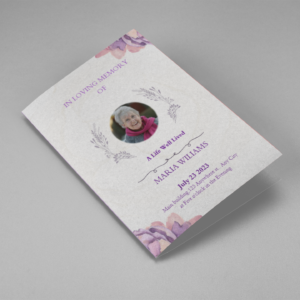When planning a funeral for Spanish-speaking communities or loved ones with a Spanish heritage, understanding “Funeral Spanish” is essential. From traditions and rituals to specific terms used in ceremonies, this guide will help navigate the nuances of Spanish funerals.
What is Funeral Spanish?
“Funeral Spanish” refers to the cultural, traditional, and linguistic aspects of funerals within Spanish-speaking communities. This includes unique customs, rituals, and terminology often used to honor the deceased.
Common Spanish Funeral Traditions
Velorio (Wake)
The velorio is an important tradition in Spanish funerals. It is a wake held before the funeral service, where friends and family gather to pay respects to the deceased. The body is typically present in a coffin, and the event can last several hours or even overnight.
Misa de Requiem (Requiem Mass)
The misa de requiem is a Catholic funeral mass held to pray for the soul of the departed. This is a solemn ceremony featuring prayers, hymns, and blessings, often conducted in Spanish.
Entierro o Sepelio (Burial or Interment)
The entierro or sepelio is the act of burying the deceased. Family members may accompany the coffin to the cemetery, where final prayers and rituals are performed.
Novenario (Nine-Day Prayer)
A unique tradition in Spanish-speaking communities is the novenario, a nine-day period of prayers and mourning following the funeral. These prayers are often said to help the soul of the departed find peace.
Spanish Funeral Vocabulary
Understanding key funeral-related Spanish terms can enhance communication during planning and ceremonies. Below are common terms:
- Difunto/a: Deceased
- Esquela: Obituary
- Funeral: Funeral
- Cementerio: Cemetery
- Ataúd: Coffin
- Capilla: Chapel
- Luto: Mourning
- Pésame: Condolences
- Urna: Urn
Phrases for Offering Condolences in Spanish
Offering condolences in Spanish requires thoughtful words. Here are some common phrases:
- Mis más sentidas condolencias. (My deepest condolences.)
- Lamento mucho su pérdida. (I am very sorry for your loss.)
- Que en paz descanse. (May they rest in peace.)
- Estoy aquí para lo que necesite. (I am here for whatever you need.)
Preparing a Spanish Funeral Program
Designing a Program with Spanish Text
Creating a funeral program in Spanish involves including culturally and linguistically appropriate elements. Key sections to include:
Obituario (Obituary)
An obituario provides details about the deceased, including their name, birth and death dates, and a brief life summary.
Orden del Servicio (Order of Service)
The orden del servicio outlines the schedule of events for the funeral, such as prayers, eulogies, and hymns.
Poemas y Oraciones (Poems and Prayers)
Include meaningful poemas and oraciones that reflect the faith and personality of the deceased.
Agradecimientos (Acknowledgments)
The agradecimientos section expresses gratitude to attendees and those who provided support.
Choosing a Design
Consider designs that incorporate cultural symbols like crosses, candles, or flowers such as marigolds, which hold special significance in many Spanish-speaking cultures.
Popular Funeral Songs in Spanish
Music plays a significant role in Spanish funerals. Here are some popular choices:
- Ave María – A timeless Catholic hymn.
- Amor Eterno by Rocío Dúrcal – A heartfelt ballad about eternal love.
- La Llorona – A traditional song filled with emotion and mourning.
- Hasta Que Te Conocí by Juan Gabriel – A soulful reflection on love and loss.
Spanish Funeral Etiquette
Dress Code
In Spanish funerals, wearing black or dark-colored attire is a sign of respect. El luto (mourning) may also include wearing a black ribbon.
Expressing Emotions
Spanish funerals often involve openly expressing grief, including tears and heartfelt speeches. It is seen as a natural and healthy part of mourning.
Offering Condolences
When attending a Spanish funeral, it is customary to offer condolences to the family. Saying phrases like “Lo siento mucho” (I am very sorry) is appreciated.
How to Write an Obituary in Spanish
Biographical Information
Include the full name, date of birth, and date of death.
Family Acknowledgments
Mention immediate family members, including parents, siblings, children, and grandchildren.
Details of Funeral Services
Provide the date, time, and location of the funeral, wake, or burial.
Example Obituary in Spanish
Con profundo pesar anunciamos el fallecimiento de Don José Martínez, quien partió el 15 de enero de 2025 a la edad de 85 años. Don José fue un amado esposo, padre, abuelo y amigo. La misa fúnebre se llevará a cabo el 18 de enero en la Iglesia de San Pedro a las 10:00 AM, seguida por el entierro en el Cementerio Memorial. Que en paz descanse.
Unique Customs in Different Spanish-Speaking Countries
Mexico
In Mexico, Día de los Muertos (Day of the Dead) is a significant cultural celebration that honors deceased loved ones with altars, offerings, and marigolds.
Spain
Traditional Spanish funerals often include solemn Catholic masses and processions, sometimes accompanied by bells tolling in mourning.
Central and South America
Countries like Colombia and Peru often hold prayer gatherings and novenas to honor the departed’s soul.
Why Choose Spanish Funeral Templates?
Using templates in Spanish ensures linguistic accuracy and cultural appropriateness. These templates can be customized to include:
- Personal photos and messages.
- Spanish prayers and poems.
- Culturally significant symbols and designs.
Templates For Funeral Spanish
-
Searching for a Oak Leaf With Gold Oval Frame Half Page Funeral Program that is easy to print and amass and has a cutting-edge look? The Oak Leaf With Gold Oval Frame Half Page Funeral Program is the Perfect decision because it measures 8.5”x 5.5”.
- No Limitation on Content, Edit anything
- Edit anytime – unlimited revisions even after purchased
- Get a printable PDF downloaded to get it printed on your own.
-
Searching for a Brown and White Classic Funeral Program Half Page Program that is easy to print and amass and has a cutting-edge look? The Brown and White Classic Funeral Program Half Page Program is the Perfect decision because it measures 8.5”x 5.5”.
- No Limitation on Content, Edit anything
- Edit anytime – unlimited revisions even after purchased
- Get a printable PDF downloaded to get it printed on your own.
-
Searching for a Purple Elegant Watercolor Half Page Funeral Program Template that is easy to print and amass and has a cutting-edge look? The Purple Elegant Watercolor Half Page Funeral Program Template is the Perfect decision because it measures 8.5”x 5.5”.
- No Limitation on Content, Edit anything
- Edit anytime – unlimited revisions even after purchased
- Get a printable PDF downloaded to get it printed on your own.
-
Searching for a Cream and Green Photo Obituary Half Page Program that is easy to print and amass and has a cutting-edge look? The Cream and Green Photo Obituary Half Page Program is the Perfect decision because it measures 8.5”x 5.5”.
- No Limitation on Content, Edit anything
- Edit anytime – unlimited revisions even after purchased
- Get a printable PDF downloaded to get it printed on your own.
-
Searching for a Cream Simple Elegant Photo Church Half Page Program that is easy to print and amass and has a cutting-edge look? The Cream Simple Elegant Photo Church Half Page Program is the Perfect decision because it measures 8.5”x 5.5”.
- No Limitation on Content, Edit anything
- Edit anytime – unlimited revisions even after purchased
- Get a printable PDF downloaded to get it printed on your own.
-
Searching for a Samovar Silver Half Page Funeral Program Template that is easy to print and amass and has a cutting-edge look? The Samovar Silver Half Page Funeral Program Template is the Perfect decision because it measures 8.5”x 5.5”.
- No Limitation on Content, Edit anything
- Edit anytime – unlimited revisions even after purchased
- Get a printable PDF downloaded to get it printed on your own.
-
Searching for an Elegant Beige Half Page Funeral Program Template that is easy to print and amass and has a cutting-edge look? The Elegant Beige Half-Page Funeral Program Template is the Perfect decision because it measures 8.5”x 5.5”.
- No Limitation on Content, Edit anything
- Edit anytime – unlimited revisions even after purchased
- Get a printable PDF downloaded to get it printed on your own.
-
Searching for a White Floral Pro Half Page Funeral Program Template that is easy to print and amass and has a cutting-edge look? White Floral Pro Half Page Funeral Program Template is the Perfect decision because it measures 8.5”x 5.5”.
- No Limitation on Content, Edit anything
- Edit anytime – unlimited revisions even after purchased
- Get a printable PDF downloaded to get it printed on your own.
-
Searching for a Grey and Burgundy Elegant Half Page Funeral Program Template that is easy to print and amass and has a cutting-edge look? Grey and Burgundy Elegant Half Page Funeral Program Template is the Perfect decision because it measures 8.5”x 5.5”.
- No Limitation on Content, Edit anything
- Edit anytime – unlimited revisions even after purchased
- Get a printable PDF downloaded to get it printed on your own.
-
Searching for a Soft Green and Grey Minimalist Floral Half Page Funeral Program Template that is easy to print and amass and has a cutting-edge look? Soft Green and Grey Minimalist Floral Half Page Funeral Program Template is the Perfect decision because it measures 8.5”x 5.5”.
- No Limitation on Content, Edit anything
- Edit anytime – unlimited revisions even after purchased
- Get a printable PDF downloaded to get it printed on your own.
-
Searching for a Gray Elegant Oval Frame Half Page Funeral Program Template that is easy to print and amass and has a cutting-edge look? Gray Elegant Oval Frame Half Page Funeral Program Template is the Perfect decision because it measures 8.5”x 5.5”.
- No Limitation on Content, Edit anything
- Edit anytime – unlimited revisions even after purchased
- Get a printable PDF downloaded to get it printed on your own.
-
Searching for a Blue Organic Minimal Half Page Funeral Program Template that is easy to print and amass and has a cutting-edge look? Blue Organic Minimal Half Page Funeral Program Template is the Perfect decision because it measures 8.5”x 5.5”.
- No Limitation on Content, Edit anything
- Edit anytime – unlimited revisions even after purchased
- Get a printable PDF downloaded to get it printed on your own.
-
Searching for a Pink and Orange Watercolour Half Page Funeral Program Template that is easy to print and amass and has a cutting-edge look? Pink and Orange Watercolour Half Page Funeral Program Template is the Perfect decision because it measures 8.5”x 5.5”.
- No Limitation on Content, Edit anything
- Edit anytime – unlimited revisions even after purchased
- Get a printable PDF downloaded to get it printed on your own.
-
Searching for a Pink Floral Paper Half Page Funeral Program Template that is easy to print and amass and has a cutting-edge look? Pink Floral Paper Half Page Funeral Program Template is the Perfect decision because it measures 8.5”x 5.5”.
- No Limitation on Content, Edit anything
- Edit anytime – unlimited revisions even after purchased
- Get a printable PDF downloaded to get it printed on your own.
Funeral Program : Helping Videos
Frequently Asked Question On Funeral Spanish
What is a typical funeral service in Spanish culture?
A typical funeral service includes a wake (velorio), a religious mass, and a burial (entierro). Prayers, hymns, and family gatherings are essential parts of the process.
How do I write an obituary in Spanish?
To write an obituary in Spanish:
- Begin with the deceased’s full name and dates of birth and death.
- Share a brief biography highlighting significant achievements and family details.
- End with a note of gratitude or a prayer.
What are some traditional Spanish funeral songs?
Traditional songs include religious hymns like “Ave María” or “Dios está aquí.” Some families may also include contemporary songs meaningful to the deceased.
Are there specific colors associated with Spanish funerals?
Black is the most common color for mourning in Spanish-speaking cultures, symbolizing respect and grief.















